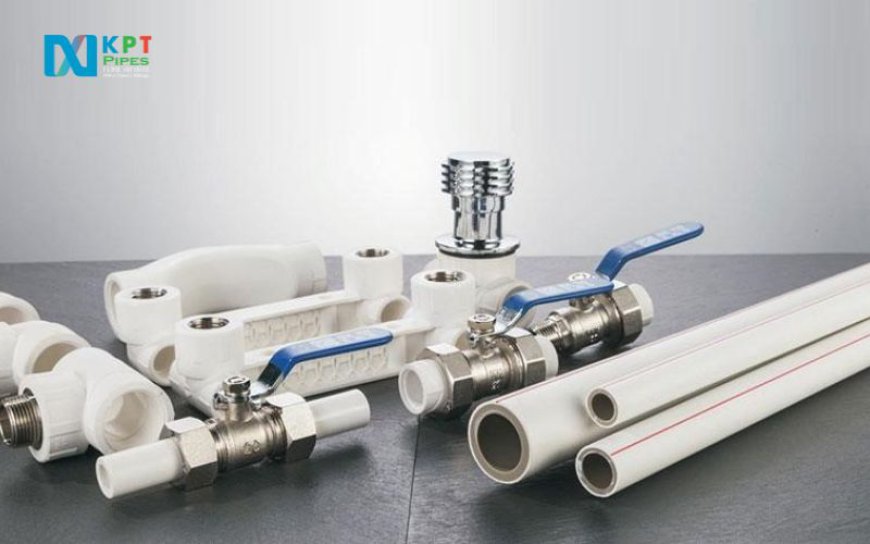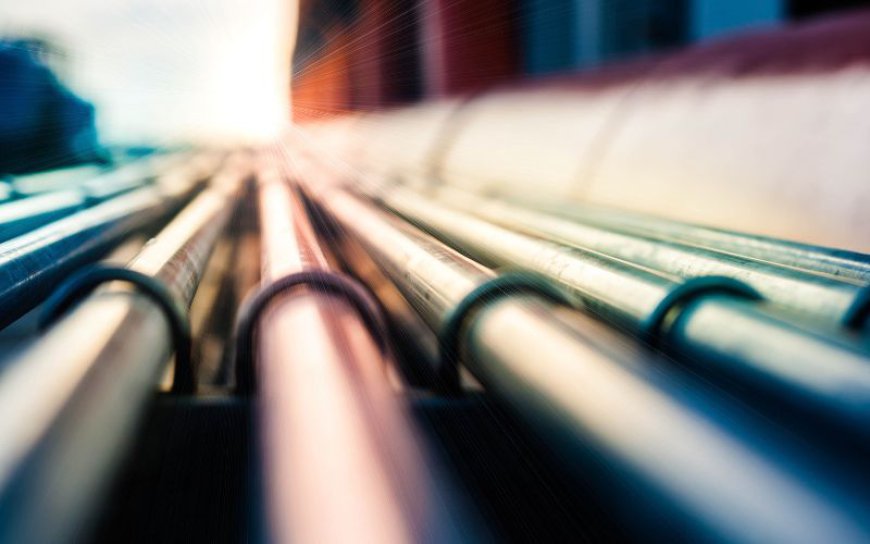PPR Pipe Variants: Choosing the Right Type for Your Plumbing Needs
Choosing the right PPR pipe variant is crucial for efficient, durable, and cost-effective plumbing. PPR pipes come in several types, including standard, composite (PPR-CT), aluminum-reinforced (PPR-AL-PPR), fire-resistant (PPR-FR), and UV-resistant variants, each suited to specific applications. For optimal performance, consider factors like temperature, pressure, and environmental conditions. Partnering with a reputable pipes manufacturing company like KPT Pipes ensures high-quality products tailored to your needs, enhancing the reliability and longevity of your plumbing system.


In the dynamic world of plumbing, the choice of piping material can significantly impact the efficiency, durability, and cost-effectiveness of your plumbing system. Polypropylene Random Copolymer (PPR) pipes have become a popular choice due to their numerous advantages. However, within the realm of PPR pipe, various types and variants cater to different needs and applications. This blog aims to shed light on the various PPR pipe variants and guide you in choosing the right type for your plumbing requirements.
Understanding PPR Pipes
PPR pipes are made from Polypropylene Random Copolymer, a thermoplastic polymer known for its high resistance to heat, pressure, and chemicals. These pipes are designed to handle both hot and cold water, making them versatile for various plumbing applications. Their lightweight nature, combined with their durability, makes PPR pipes a preferred choice for modern plumbing systems.
Types of PPR Pipes and Their Applications
Standard PPR Pipes
Standard PPR pipes are the most common type used in residential and commercial plumbing. They are designed to handle a range of temperatures and pressures, making them suitable for general water supply and distribution systems. These pipes are known for their smooth internal surface, which minimizes friction and reduces energy loss.
Applications:
- Residential water supply
- Commercial water distribution
- General plumbing systems
PPR-CT (Composite) Pipes
PPR-CT pipes, also known as composite PPR pipes, feature a three-layer construction. They consist of a core layer of PPR material, sandwiched between two layers of aluminum. This composite structure enhances the pipe’s strength and thermal conductivity, making it ideal for high-temperature applications.
Applications:
- Hot water systems
- Radiant heating systems
- High-temperature industrial applications
PPR-AL-PPR Pipes
PPR-AL-PPR pipes are similar to PPR-CT pipes but with a slightly different construction. These pipes have a layer of aluminum in the middle, covered by PPR layers on both sides. The aluminum layer acts as a barrier to oxygen and prevents pipe degradation over time. This type of pipe is highly resistant to high pressures and temperatures.
Applications:
- Hot and cold water systems
- Industrial applications requiring high pressure
- Areas with high oxygen levels
PPR-FR (Fire-Resistant) Pipes
PPR-FR pipes are designed to provide enhanced fire resistance. They incorporate special additives that increase the pipe's ability to withstand fire and high temperatures. This makes them suitable for installations where fire safety is a critical concern.
Applications:
- Fire sprinkler systems
- Buildings with stringent fire safety regulations
- Industrial facilities with high fire risk
PPR-C (Greentherm) Pipes
PPR-C, also known as Greentherm pipes, are designed for environmental sustainability. These pipes are manufactured using eco-friendly processes and materials, making them a green choice for plumbing systems. They are durable, resistant to chemicals, and have a lower environmental impact compared to traditional piping materials.
Applications:
- Eco-friendly building projects
- Systems requiring minimal environmental impact
- General water supply where sustainability is a priority
PPR-FR (ThermaPlus) Pipes
PPR-FR or ThermaPlus pipes are known for their excellent thermal insulation properties. They are designed to maintain the temperature of the fluid inside the pipes, reducing energy loss and improving the efficiency of heating systems.
Applications:
- Hot water systems
- HVAC systems
- Industrial heating applications
Pneumatic Pipes
Pneumatic PPR pipes are specifically designed for the transportation of compressed air. They have a special construction that allows them to withstand the pressures and stresses associated with pneumatic systems. These pipes are used in various industrial applications where compressed air is a primary utility.
Applications:
- Compressed air systems
- Pneumatic machinery and tools
- Industrial automation systems
Glass Fiber Reinforced PPR Pipes
Glass Fiber Reinforced PPR pipes are engineered with a layer of glass fiber embedded within the PPR material. This reinforcement provides additional strength and rigidity, making these pipes suitable for high-pressure and high-temperature applications.
Applications:
- High-pressure water systems
- Industrial fluid transportation
- Systems requiring enhanced pipe strength
UV-Resistant PPR Pipes
UV-Resistant PPR pipes are designed to withstand exposure to ultraviolet (UV) radiation. This makes them ideal for outdoor installations where they are exposed to sunlight. These pipes maintain their integrity and performance even when subjected to UV rays.
Applications:
- Outdoor water supply systems
- Exposed plumbing installations
- Systems in regions with high UV exposure
Choosing the Right PPR Pipe for Your Needs
When selecting the appropriate PPR pipe variant, consider the following factors:
-
Temperature and Pressure Requirements: Determine the temperature and pressure conditions of your plumbing system. For high-temperature applications, PPR-CT or PPR-AL-PPR pipes may be more suitable. For general use, standard PPR pipes are often sufficient.
-
Environmental Conditions: Consider the environmental factors where the pipes will be installed. If UV exposure is a concern, UV-resistant PPR pipes are recommended. For eco-friendly projects, PPR-C (Greentherm) pipes are a sustainable choice.
-
Specific Applications: Different applications require different types of pipes. For instance, pneumatic pipes are essential for compressed air systems, while PPR-FR pipes are crucial for fire safety.
-
Durability and Longevity: Assess the durability and longevity of the pipes based on the expected lifespan of the installation. Glass fiber reinforced pipes offer enhanced strength, while standard PPR pipes provide reliable performance for general use.
The Role of Pipes Manufacturing Companies
Choosing the right type of PPR pipe is crucial, but it is equally important to source these pipes from a reputable pipes manufacturing company. A reliable manufacturer ensures that the pipes meet industry standards and are produced with high-quality materials. KPT Pipes, a leading pipes manufacturing company, offers a wide range of PPR pipes and fittings, ensuring that you have access to the best options for your plumbing needs.
Conclusion
PPR pipes and fittings are a versatile and efficient solution for modern plumbing systems. Understanding the various types of PPR pipes and their applications will help you make an informed decision that aligns with your specific needs. Whether you require standard pipes for general use, high-temperature pipes for industrial applications, or eco-friendly options for sustainable projects, there is a PPR pipe variant to meet your requirements.
By choosing the right PPR pipe and sourcing it from a reputable pipes manufacturing company like KPT Pipes, you ensure that your plumbing system is efficient, durable, and cost-effective. Investing in quality PPR pipes today will pay off with reliable performance and long-term benefits for your plumbing system.
